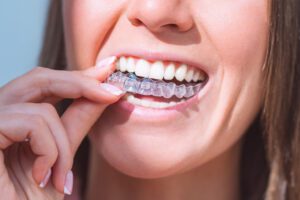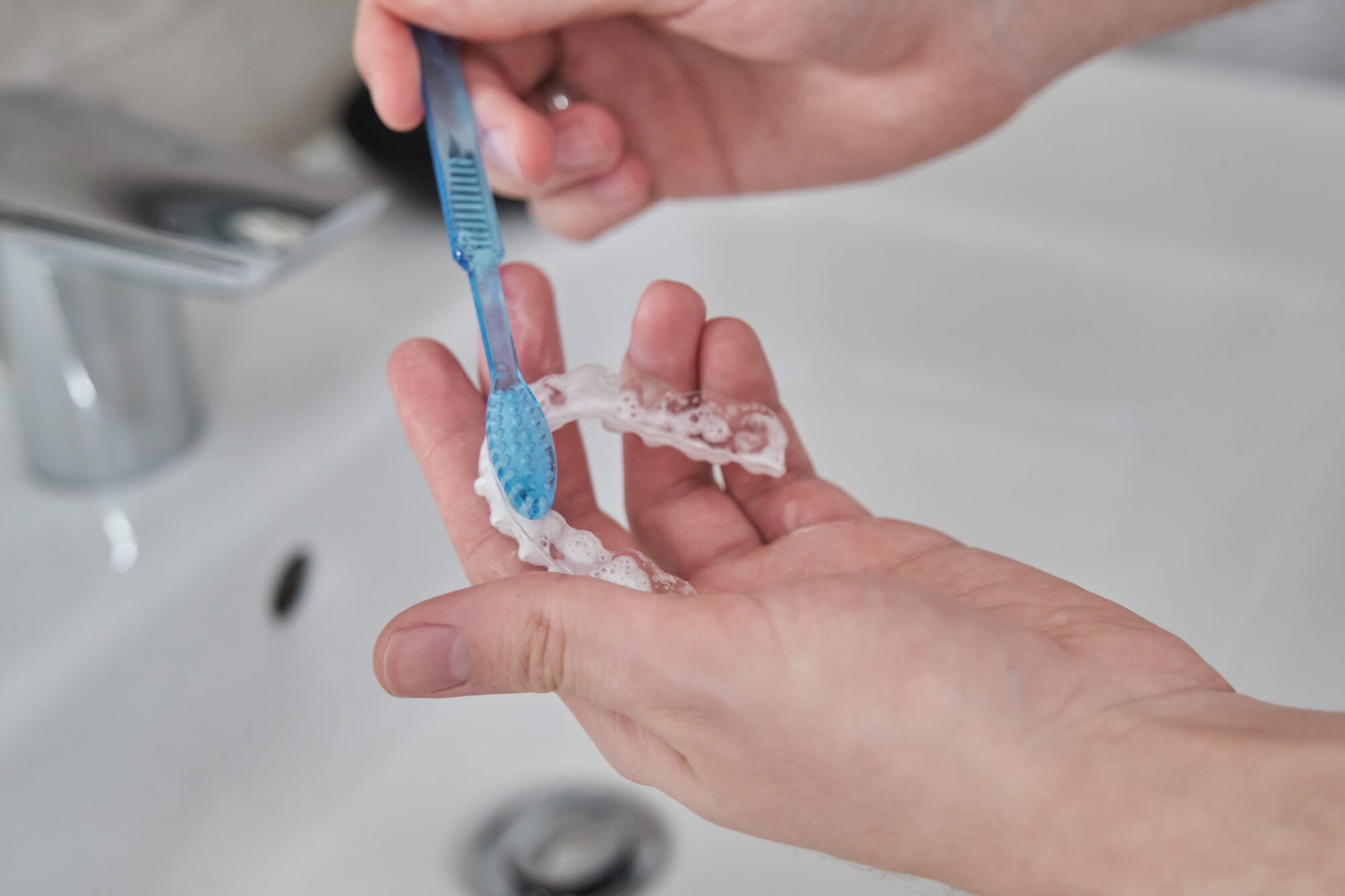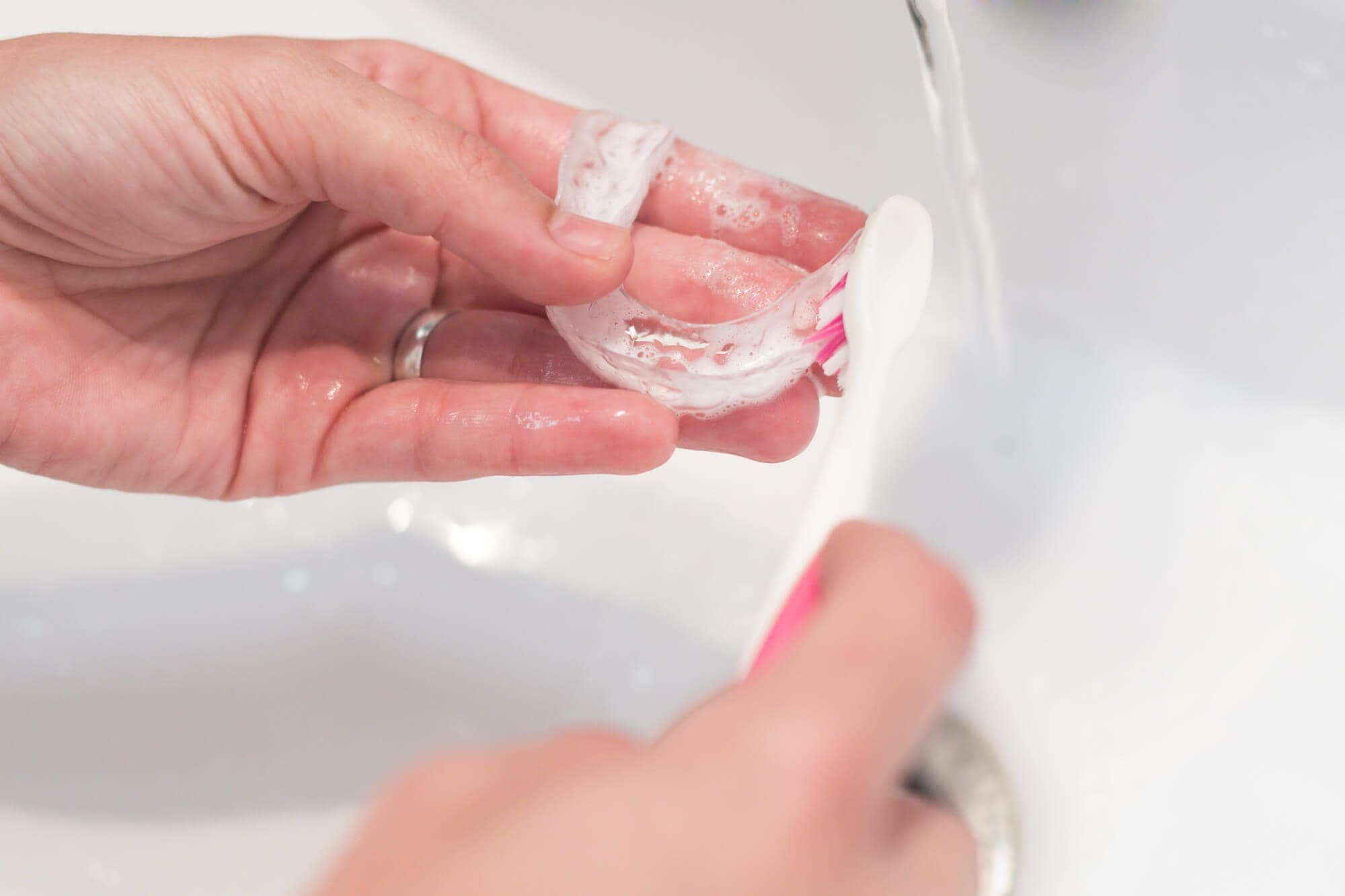 Maintaining proper hygiene for your clear aligners is essential for oral health and the effectiveness of the treatment.
Maintaining proper hygiene for your clear aligners is essential for oral health and the effectiveness of the treatment.
Individuals using clear aligners should clean their aligners regularly to prevent the build-up of bacteria and plaque, which can lead to dental issues such as cavities and bad breath. The frequency of cleaning is an important aspect of ensuring the aligners remain clear and odor-free, thus achieving the goal of a virtually invisible orthodontic treatment.
Dentists and orthodontists recommend that clear aligners be cleaned each time the user brushes their teeth, which ideally should be twice a day. This routine helps to keep the aligners as clean as the teeth themselves, integrating the care of the aligners into the daily oral hygiene regimen. Additionally, thorough cleaning once a week can prevent any residues from calcifying or staining the aligners.
Cleaning aligners after every meal before reinsertion is also advised to avoid trapping food particles and bacteria between the teeth and the aligner. This not only promotes better oral hygiene but also ensures that the aligners remain invisible and free from unsightly discolorations. Consistent and correct cleaning practices are essential for the longevity and success of clear aligner treatment.
Take the first step towards a healthier, more confident smile with clear aligners. Follow our expert maintenance tips and schedule a consultation with Smilebliss to start your journey today.
Your dream smile is just a click away. Book now!
Regular cleaning of aligners is critical for oral health and ensures they remain virtually invisible.
Bacteria thrive in the warm, moist environment of the mouth, making it essential to clean aligners after each use.
If not cleaned regularly:
One should deep clean their clear aligners once a week to minimize bacteria build-up.
Clear aligners’ appeal partly lies in its transparency, which can be compromised without regular cleaning.
To maintain this:
Proper care keeps the clear aligners as invisible as they are meant to be.
Maintaining optimal hygiene for clear aligners is crucial. They should be cleaned daily and subjected to a deeper cleaning routine regularly to prevent bacterial build-up and staining.
 Aligners must be cleaned every time the user brushes their teeth, which should be at least twice a day. Following a consistent daily care routine prevents the accumulation of plaque and odor.
Aligners must be cleaned every time the user brushes their teeth, which should be at least twice a day. Following a consistent daily care routine prevents the accumulation of plaque and odor.
Aside from regular brushing and rinsing, a weekly deep clean helps maintain the aligners’ condition and prevents long-term discoloration.
Maintaining the cleanliness of clear aligners is crucial for oral hygiene and aligner longevity. This section provides detailed methods and recommended products suitable for daily and weekly aligner care.
If you have Invisalign, Invisalign sells a branded cleaning system specifically designed for their aligners. This system typically involves soaking the aligners in a cleaning solution, which helps eliminate bacteria and plaque.
Here are the suggested steps for using commercial cleaning products:
It’s important to follow the product instructions precisely for optimal results.
Homemade cleaning solutions can be an alternative when commercial products are not available.
Two common household items can be used:
After using either solution, one must:
Both methods require consistency and proper handling to ensure that aligners remain clean without incurring any damage.
Maintaining clear aligners requires attention to detail to avoid common issues such as discoloration and odor. These subsections will guide users through resolving these specific problems.

Aligners can become discolored over time, especially when exposed to colored beverages or foods. To combat this:
Odor in aligners often results from bacteria buildup. Address this issue effectively by:
When owning clear aligners, individuals should adhere to a regular cleaning regimen to maintain oral health and aligner integrity. Orthodontists like Smilebliss suggest that aligners be cleaned after each use. Given the typical wear of around 20-22 hours a day, this routine is essential in preventing the buildup of plaque and bacteria.
It is critical to use the correct tools and cleaning agents. A soft-bristled brush prevents scratches, while non-abrasive cleaning agents prevent damage to the aligners.
It is advised to avoid:
Furthermore, dental check-ups enable professionals to monitor the aligners’ condition and provide guidance on care. Patients should bring their aligners to these appointments for personalized advice. Proper maintenance not only extends the lifespan of the aligners but also ensures that they remain virtually invisible and comfortable to wear.
Take charge of your aligners’ care with professional guidance from Smilebliss. Maintain your oral health and aligner integrity by following these essential cleaning steps.
Remember to clean your aligners after each use to prevent plaque and bacteria buildup. For a deeper clean, use a denture cleaner or specialized aligner cleaning solution weekly.
Avoid colored or scented soaps and hot water to keep your aligners in top shape. Plus, don’t forget to schedule regular dental check-ups and bring your aligners for personalized advice.
Keep your aligners virtually invisible and comfortable—trust Smilebliss for professional care and maintenance. Contact us today!